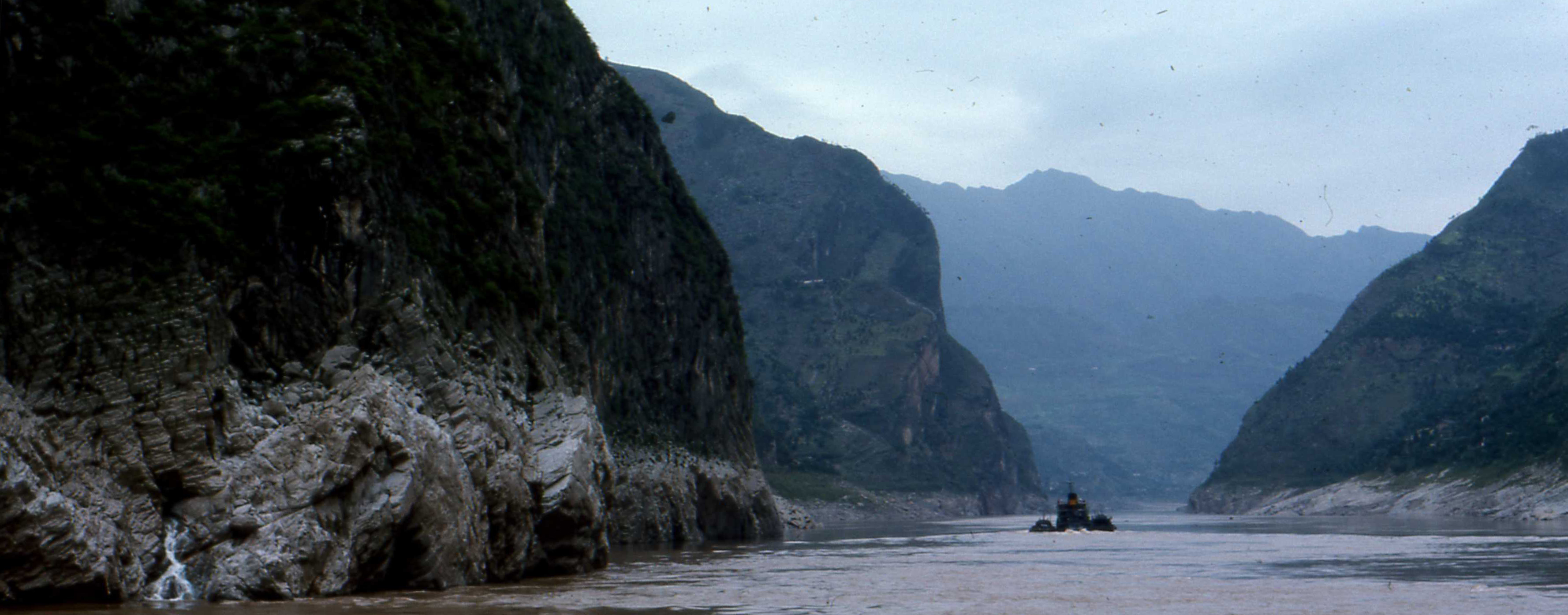-
Title
-
1941 Graham's Giant Panda Hunt
-
Description
-
After the death in the Bronx Zoo of Pandora and Pan in 1941 and 1940, respectively, officials at the zoo began to search for another pair of Giant Pandas to replace them. On June 17, 1941, Dr. Frank Price, on behalf of the Chinese government, asked David Crockett Graham to procure them. As the first diplomatic gift of pandas from the ruling party of China to a foreign nation, Madame Chiang Kai-shek (Soong Mei-ling) presented them to the American people as a symbol of solidarity between the two nations.
-
Commentary
-
After the death in the Bronx Zoo of Pandora and Pan in 1941 and 1940, respectively, officials at the zoo began to search for another pair of Giant Pandas to replace them. On June 17, 1941, Dr. Frank Price, on behalf of the Chinese government, asked David Crockett Graham to procure them (6a; 9). As the first diplomatic gift of pandas from the ruling party of China to a foreign nation, Madame Chiang Kai-shek (Soong Mei-ling) was to present them to the American people to symbolize solidarity between the two nations (8). In particular, the gift was to thank Americans for supporting the United China Relief Campaign, which aided Chinese war orphans who were casualties of the Japanese invasion of China that began in 1937 (1; 8).
The request for the pandas came at the most difficult time of year. During summer, Giant Pandas retreat to the highest altitudes. During fall hunters are busy with their crops and animals can easily hide in the dense forest (6a; 9). Additionally, Graham was already engaged by the Chinese government to study modern education and ethnography among the Miao thought to live in the panda region (Graham found Qiang there instead) (6b). However, Graham agreed to do the best he could to secure the Giant Pandas. Right away, he wrote to Den Wei Han asking him to assemble a team of hunters. Den was a Qiang headman, a government postmaster, and a Christian pastor who had formerly helped with Graham's natural science collecting expeditions and had previously secured a live panda for the American Museum of Natural History (5; 6b).
By July 23rd, both Graham and Den were in Wei Chow [Weizhou], Sichuan, near panda country (6b). Den hired two teams consisting of members of the local Wa Ssu ethnic group, many of whom had formerly captured pandas before the practice was banned by the Kuomintang government (6b). This first attempt was unsuccessful, however (5; 6a). After Graham returned to Chengdu, the pressure mounted to capture the pandas, since the gift had already been announced in the United States and it was a matter of international diplomacy (6a; 9). On Sept. 10th, 1941, Graham headed back to panda country to renew efforts (5).
Setting up base camps at Ts’ao P’o [Caopoxiang], and Wei Chow [Weizhou], Sichuan, Graham and Den hired additional hunters and offered increased rewards for capture. They now had over 70 hunters and 40 hunting dogs in seven teams – the largest panda hunt organized to date (5; 9; 8). Each leading a team of hunters, Graham and Den combed the bamboo forests of the mountainous regions of Sichuan province west of Wenchuan (Miansi) between Songpan (Songpan Xian) in the north and Ninguenfu (Xichang) in the south (9).
Back in their Ts’ao P’o camp, Graham and Den received news that a baby panda had been captured by some other hunters and was being held by the headman of a village two mountains away. Den set off to purchase it equipped with a letter from a local Kuomintang official, Magistrate Kang, demanding its sale (5, 9). Mr. Lo, who owned the baby panda, was proud to contribute to this important international mission, and so upon payment handed over the panda to Den (5). Arriving at Wenchuan with a female panda about five or six months old, Den found Graham severely ill with the flu (6a). While in Wenchuan, they learned that one of Den's teams had also secured a live baby Giant Panda, which had already been transported to Chengdu (6a). On Sept. 30th, 1941, Dr. Price met Graham and the panda in Kuanhsien (Dujiangyan) to take them to Chengdu in a truck (5).
Arriving in Chengdu that evening, Graham’s wife, Alicia Morey Graham, celebrated the success with a “panda party” at which Mr. and Mrs. Price, as well as over ten West China missionaries met the captive pandas (6c). The pair of pandas stayed at Graham’s home at West China Union University for several weeks. Graham claims that the famous “Panda Lady,” Ruth Harkness, taught him how to care for baby pandas, which are “ten times as hard to keep alive than human babies” (6a). John Tee Van, a trustee of the Bronx Zoo, stayed with the Grahams and the pandas at Chengdu from Oct. 30th to Nov. 6th, 1941.
Then Graham and Tee Van flew to Chongqing where there was a media event on November 9th, 1941 (6c; 8). Madame Chiang and her sister Madame Kung (Soong Ai-ling) participated in a radio broadcast about the gift of pandas to the United States (8). American reporters William Dunn and Annalee Whitmore organized the program. Unfortunately, although the Chongqing radio technicians had prepared for every possible contingency, “atmospheric conditions beyond [their] control” prevented the signal from reaching Manila, from which it was to be relayed to San Francisco (10). No American audiences ever heard it.
In a journey that lasted six weeks, Tee Van escorted the panda pair across the ocean after the Japanese attack on Pearl Harbor dodging Japanese aggression by camouflaging the black and white pandas (1). Leaving San Francisco on Dec. 26th, Tee Van brought them from the west coast to New York City by train (1). On Dec. 30th, 1941, the Chinese consul, Dr. Tsuni-chi Yu, officially presented them to the Bronx Zoo (1).
For the Soong sisters, the gift was a plea for continuing American assistance in the war against Japan (8). To representatives of the Bronx Zoo, the pandas represented a continuation of their blockbuster attraction, as well as an extension of scientific study of the species, which was new to the Western world of science at the time (2). They expected the male and female pair to procreate in captivity within six years (1). However, it was to be decades before Chinese scientists succeeded in breeding pandas in captivity (7).
-
Event Date
-
1941
-
References
-
The following sources are referred to in the text by number.
-
1. Anon. “Bronx to Get New Panda: Mme. Chiang Kai-shek Allows Gift in Thanks for China Aid.” Sept. 12, 1941. New York Times, p.23
-
2. Anon. “Zoo to Get Two Pandas: Male and Female Awaiting Shipment from Chungking.” Oct. 27, 1941. New York Times, p.19
-
3. Anon. “Zoo Gets Pandas; Debut is Formal: Presentation of China’s Gift to America’s Children Made by Dr. Tsune-chi Yu. Dec. 31, 1941. New York Times, p.19
-
4. Graham Family Archives. “Panda Broadcast, Nov. 9th, 1941.”
-
5. Graham, David Crockett. 1941. “Securing a Live Panda.” West China Missionary News 43(9-10): 302-3.
-
6. Chris Hoogendyk, ed. 2019. David Crockett Graham Historical Diaries, Archive Edition (DVD).
6a. Graham, David Crockett. n/d. An Autobiography.
6b. Graham, David Crockett. 1941. Diary 15
6c. Graham, Alicia Morey. 1933-1945. Guestbook.
-
7. Pandas International. “Captive Breeding Program.”
-
8. Schultz, Colin. 2014. “How an American Missionary Helped Capture the First Panda Given to the U.S.” Smithsonian Magazine (accessed 2023-04-10).
-
How an American Missionary Helped Capture the First Panda Given to the U.S.
-
9. Graham, David Crockett. 1942. “The Panda Comes to America.” Manuscript version of Missions Magazine March 1942. This manuscript is published in the article by Colin Schultz in the Smithsonian Magazine (8).
-
10. Dunn, William J. 1988. Pacific Microphone. College Station, TX: Texas A&M University Press.
-
Published In
-
Incredible restored high-definition color footage of the news event in Chongqing, November 9th, 1941:
-
https://cj.sina.com.cn/articles/view/1901329763/m7153fd63033017k9a
-
Original black and white footage of the arrival of the pandas in Chongqing produced by John Tee Van.
-
https://wcsarchives.libraryhost.com/repositories/2/archival_objects/141477
-
Some of the photos associated with this event are published in: 葛维汉在华西, 葛维汉 著, 卞思梅 彭文斌 译. 天地出版社, 成 都市. Géwéihàn zài huáxī, géwéihànzhe, biànsīméi péngwénbīn yì. Tiāndì chūbǎn shè, chéngdū shì. Ge Weihan in West China, written by Ge Weihan, translated by Bian Simei and Peng Wenbin. Tiandi Publishing House, Chengdu. ISBN: 978-7-5455-6705-2
-
Type
-
Event
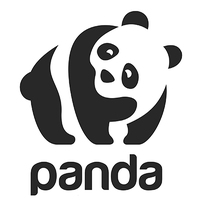 Panda_Logo_small.jpg
Panda_Logo_small.jpg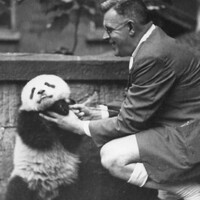 Gordon Jones with Pandora
Gordon Jones with Pandora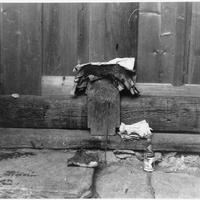 Altar of the Wa-Ssu Hunters
Altar of the Wa-Ssu Hunters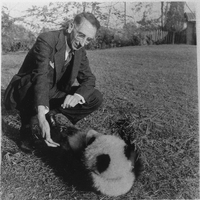 Bert Rape with Panda
Bert Rape with Panda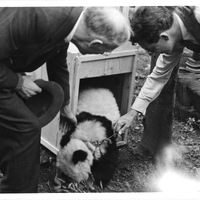 D.C. Graham and Mr. Tee Van with Panda
D.C. Graham and Mr. Tee Van with Panda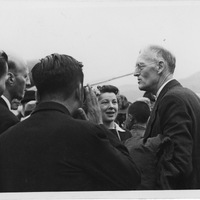 D.C. Graham Talking to Reporters, Chungking
D.C. Graham Talking to Reporters, Chungking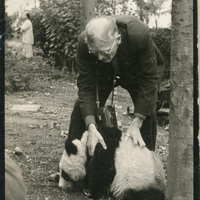 D.C. Graham with a Panda, 1941
D.C. Graham with a Panda, 1941 D.C. Graham XGOY Panda Broadcast
D.C. Graham XGOY Panda Broadcast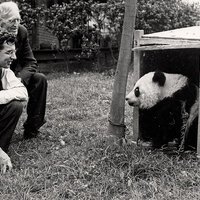 David Crockett Graham, John Tee Van, and a Panda
David Crockett Graham, John Tee Van, and a Panda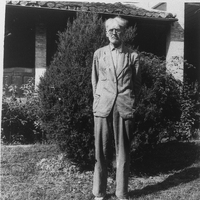 Graham in Chengdu after Panda Hunt
Graham in Chengdu after Panda Hunt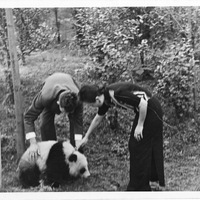 Madame Chiang with Baby Panda
Madame Chiang with Baby Panda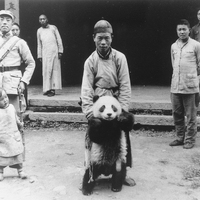 Magistrate and Others with Panda
Magistrate and Others with Panda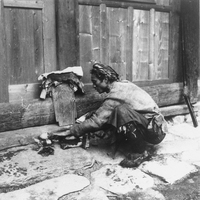 Wa-Ssu Hunter Worship
Wa-Ssu Hunter Worship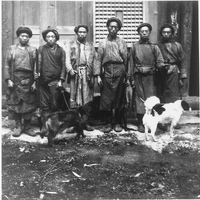 Wa-Ssu Hunters and Dogs
Wa-Ssu Hunters and Dogs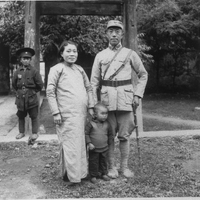 Wenchuan Magistrate Family
Wenchuan Magistrate Family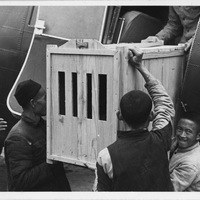 Workers Unloading a Panda
Workers Unloading a Panda